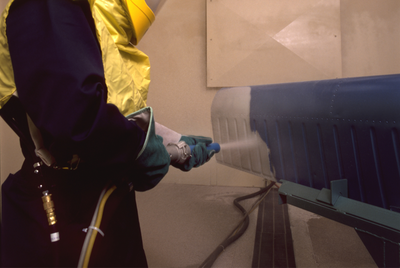30th May 2024
Air pressure in sandblasting (sandblasting is an outdated term in the industry) is a crucial factor that determines the effectiveness and quality of the blasting process. It refers to the pressure of the compressed air used to propel the abrasive material against the surface being treated.
The required air pressure depends on what abrasive you are blasting, the type of job and the equipment used. Generally, the optimal operating pressure for a sandblasting pot is around 90 PSI (pounds per square inch), which ensures efficient and effective blasting. The compressor must provide enough airflow to maintain at least 50 PSI in the blast pot to keep it pressurised. For light-duty sandblasting, a compressor with a PSI rating of 90 or more is needed, while medium and heavy-duty sandblasting require a minimum of 100 PSI. Industrial-grade compressors may need a PSI rating of 120 or more.
It’s important to match the compressor size with the nozzle size and the volume of air required for your specific sandblasting operation. If you’re using a larger nozzle or blasting at higher pressures, you’ll need a compressor that can deliver a higher volume of air (measured in CFM - cubic feet per minute) to maintain the necessary pressure. Remember, the air pressure for sandblasting typically falls between 60 and 100 PSI.
Maintaining the correct air pressure is vital for both safety and efficiency. Operators should regularly check and adjust the pressure to suit the specific task at hand. Proper training and adherence to safety guidelines are essential to avoid accidents and ensure a successful sandblasting operation.
In summary, air pressure is a critical variable in sandblasting that affects the quality, speed, and safety of the process. Although there are typical pressure rates, adjusting the pressure appropriately based on the type of abrasive, surface material, and desired outcome is key to achieving optimal results.




